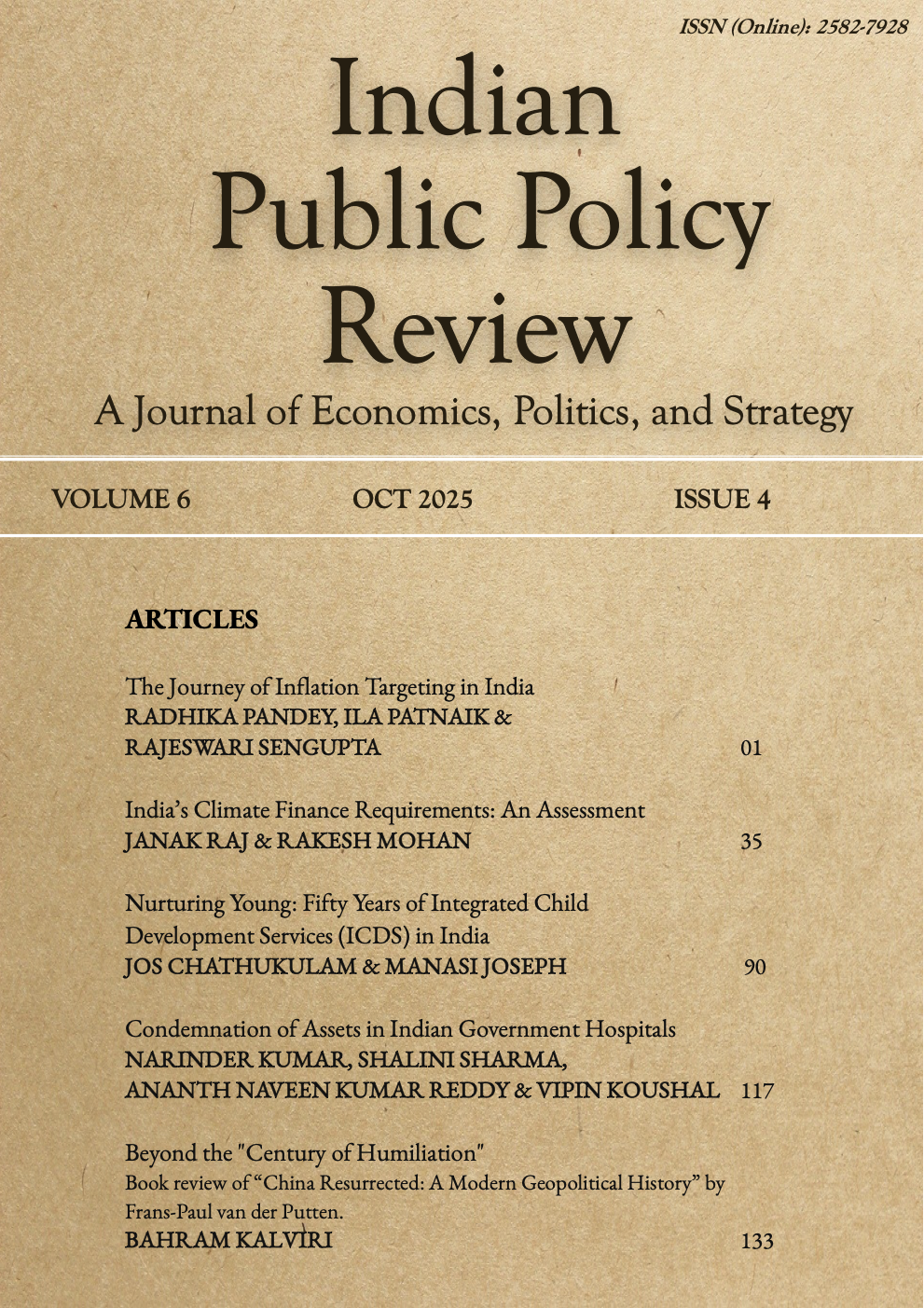Current Issue

This issue opens with Pandey, Patnaik, and Sengupta's comprehensive assessment of India’s inflation targeting regime, analysing eight years of monetary policy performance, post-pandemic deviations, and the constraints imposed by exchange-rate management within the “Impossible Trilemma” framework. Raj and Mohan conduct a granular assessment of India’s climate finance needs for decarbonising cement, steel, power, and transport sectors by 2030, concluding that $467 billion is required, and that macroeconomic management must balance external and domestic capital flows. Chathukulam and Joseph mark fifty years of the Integrated Child Development Services, critically examining strengths, challenges, and global comparisons to argue for renewed focus on early childhood care, nutrition, and social development in India’s Anganwadi system. Kumar, Sharma, Reddy, and Koushal survey governance gaps in the condemnation of assets within government hospitals, discussing inefficiencies in asset disposal and recommending procedural as well as policy changes. Finally, Kalviri’s review of Frans-Paul van der Putten’s China Resurrected reflects on the complexities of China’s modern geopolitical transformation, connecting national revival and sovereignty to longstanding historical ambitions.

